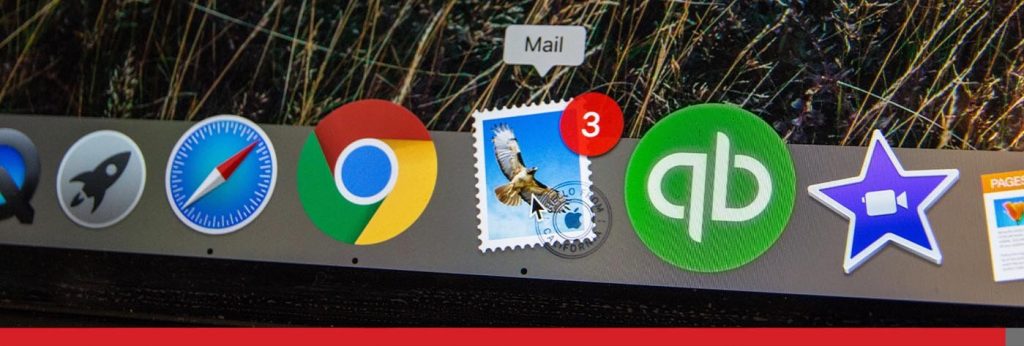For seasoned eCommerce professionals and newcomers alike, understanding the profound significance of email marketing is similar to wielding a formidable magic wand in the quest to boost sales and revenues.
In this simple but comprehensive guide, we’ll delve into the intricate world of eCommerce email marketing, exploring its full potential and revealing how it can drive your online store’s success.
- Building Your Email List
- Why an Email List Matters
- How to Do Email Marketing for eCommerce?
- Segmenting Your Email List
- Paying Attention to Your Email Designs
Building Your Email Marketing List
Having a list of contacts to promote your services, products, or events is extremely valuable; every successful business depends on it, and every eCommerce business needs it. It’s how every eCommerce email marketing strategy starts.

It’s important that you keep adding to your list, maintaining your list for accuracy and keep communicating with your list regularly. Before jumping into that, it’s essential to have a complete and reliable email hosting service. Find a host that you like, for example, EasyHosting’s email hosting, figure out your needs and requirements and make your pick.
Let’s check out why you want your emails to reach your clients’ inbox!

Why an Email Marketing List Matters
An email marketing list is a virtual collection of individuals who have willingly expressed interest in your offerings, a congregation of potential buyers eagerly awaiting your messages.
According to Campaign Monitor, small eCommerce businesses are growing their email marketing lists for simple reasons. It results in larger order sizes, building a larger pipeline of prospects, with the endgame being to acquire new customers.
As the same study notes, more than half of small businesses would increase their spending on email marketing, and over 33% would maintain a steady budget. This means the ROI in this channel is significant and should be one of the main focuses for every growing company.
Here’s why this list is indispensable:
- Crucial for eCommerce success: Your email marketing list isn’t just another asset; it’s the foundation for your eCommerce success. It’s a direct line to your audience, a channel you already own, unaffected by ever-changing algorithms or platform whims.
- Benefits of a targeted audience: Within this list lies the treasure trove of a targeted audience. Each subscriber has willingly taken the first step, showing an interest in your products or services. This targeted group is far more likely to engage with your messages, convert into customers, and ultimately fuel your sales and revenue growth.
So, as we embark on this email marketing journey, remember that your email list isn’t just a list; it’s your most potent weapon in the arsenal of eCommerce success.

How to Do Email Marketing for eCommerce?
Now that we’ve established the paramount importance of your email list let’s explore the art of growing it strategically.
Building a robust list is not just about quantity but quality and engagement. But of course, working on a few solid email marketing campaigns is another golden ticket to success.
Write an engaging welcome email to maximize customer engagement, a key goal for every eCommerce marketer. You can send abandoned cart emails to existing customers who drop out of the purchase flow, promotional emails or customer feedback emails to improve your service going forward. Clients who value your business will respond, and their reactions will help set the course for your success.
Here are some valuable insights into crafting effective opt-in strategies:
Various Methods for Growing Your Email Marketing Lists
Website sign-up forms: Incorporate well-placed, user-friendly sign-up forms on your site, especially on high-traffic pages like the homepage, product pages, and blog posts.
Exit-intent popups: When a visitor is about to leave your site, trigger an exit-intent popup with an enticing offer or newsletter subscription prompt. It’s a last-minute opportunity to capture their interest.
Social media integration: Promote your email sign-up through posts, stories, and bio links. Run contests or giveaways that require email submissions for entry.
Content upgrades: Create valuable content, such as ebooks, guides, or exclusive access to webinars, and offer them in exchange for email sign-ups. Content upgrades provide immediate value to your audience.
Referral programs: Encourage your existing subscribers to refer friends and family in exchange for rewards or discounts. Word-of-mouth referrals can be a potent source of new subscribers. A referral program is a great way to attract new leads and nurture loyal relationships.
Creating Compelling Opt-In Forms and Incentives
Clear and concise messaging: Your opt-in form should plainly communicate the value of subscribing. Use persuasive language that highlights what subscribers will gain.
Minimalist design: Keep the sign-up form clean and uncluttered. Ask for essential information only, typically just a name and email address. The easier it is to complete, the more likely visitors will subscribe.
Eye-catching visuals: Design your opt-in form to catch the eye without being obtrusive. Use contrasting colours, attractive imagery, or subtle animations to draw attention.
Compelling incentives: Offer incentives that align with your audience’s interests. Discounts, free shipping, exclusive previews, or access to premium content can be powerful motivators.
Mobile optimization: Ensure that your opt-in forms are mobile-responsive. Many users access websites from smartphones, so the sign-up process must be seamless on all devices.
Privacy assurance: Address privacy and data security concerns by adding a brief note explaining your commitment to protecting subscriber information.
By implementing these opt-in strategies and crafting compelling forms and incentives, you’ll grow your email list and attract engaged subscribers genuinely interested in your eCommerce store’s offerings.

Segmenting Your Email Marketing List
Email marketing’s true magic lies in its ability to deliver personalized content directly to your audience’s inbox. However, achieving this personalization on a large scale requires effective segmentation.
For that purpose, choose a popular email marketing tool built explicitly for eCommerce marketing to make the most of your marketing strategy.
Let’s dive into the significance of segmentation and explore different segmentation criteria:
The Importance of Segmentation
Segmentation is the secret sauce that transforms your one-size-fits-all email campaigns into tailored, highly relevant messages. Here’s why it’s crucial:
- Personalization: Segmentation allows you to create distinct groups within your email list based on specific characteristics or behaviours. By sending targeted content to each segment, you can speak directly to their interests, needs, and preferences.
- Higher engagement: When subscribers receive emails that resonate with their individual interests, they are more likely to engage with your content. This increased engagement can manifest as higher open rates, click-through rates, and even social sharing.
- Conversion rates: Segmentation doesn’t just boost engagement; it drives conversions. Whether your goal is to make sales, generate leads, or increase website traffic, segmented email campaigns consistently outperform generic ones.
Our Favourite Segmentation Types
Segmentation can take various forms, depending on the criteria you use to divide your email list. If you own an online store, you should spend time segmenting your customer base and fine-tuning your eCommerce email campaigns. Here are some common types of segmentation and how to use them effectively:
By Demographic
This divides your list based on demographic data like age, gender, location, or job title.
Example: If you’re an online fashion retailer, segmenting by gender allows you to send tailored promotions, showcasing products relevant to men and women.
Tip: Our favourite trick is to personalize product recommendations based on gender. For instance, if you’re an online fashion retailer, send tailored promotional emails that showcase products relevant to men and women.
By Purchasing history
Group subscribers based on their past buying behaviour.
Example: For an electronics store, segmenting by product category can help you send recommendations for accessories or complementary items based on a customer’s previous purchases.
Tip: Our go-to move is to suggest complementary items based on previous purchases. If you’re an electronics store, segmenting by product category can help you recommend accessories related to a customer’s past buys.
By Behaviour
Segment subscribers based on how they interact with your emails or website.
Example: If a subscriber frequently clicks on links related to outdoor gear, you can send them content and offers specific to outdoor enthusiasts.
Tip: Our top strategy is to send content and offers tailored to a subscriber’s behaviour. For instance, if a subscriber frequently clicks on links related to outdoor gear, make sure they receive content and promotions specific to outdoor enthusiasts.
By Lifecycle
Divide your audience based on where they are in their customer journeys, such as new subscribers, active customers, or lapsed customers.
Example: New subscribers might receive a welcome series, while active customers receive product recommendations and loyalty rewards.
Tip: Our preferred approach is to send tailored campaigns to each stage. New subscribers might receive a welcome series, while product recommendations and rewards can be targeted for loyal customers.
By Engagement
Sort your list by engagement levels, distinguishing between highly engaged, moderately engaged, and disengaged subscribers.
Example: Highly engaged subscribers may receive early access to sales, while disengaged subscribers may receive re-engagement campaigns.
Tip: Our top-notch eCommerce email marketing strategy is to run re-engagement campaigns for disengaged subscribers and provide exclusive benefits to highly engaged ones. This keeps your list active and responsive.

Paying Attention to Your Email Designs
While the content of your emails is extremely important, the way they look can make a significant difference in deliverability, open rates and, in the end, conversions.
The visual impact is crucial; as people used to say, ‘You eat with your eyes first.’ Your email design is the first thing recipients see. A clean, attractive design makes a positive first impression and encourages further exploration.
Key Elements of Effective Email Designs
To ensure your email designs are on point for your marketing campaigns, consider these key elements:
- Responsive design: More than 45% of users like to receive email communication on their mobile devices. So, your emails must be mobile-responsive. Ensure they look great and function well on screens of all sizes.
- Clear call-to-action (CTA): Make your CTA stand out. Use contrasting colours, compelling text, and a clear button design to guide readers toward the desired action, whether it’s making a purchase or clicking a link.
- Engaging imagery: High-quality images can elevate your email’s visual appeal. Ensure that images load quickly and enhance your message rather than overwhelming it.
- Consistent branding: Use your brand colours, logos, and fonts consistently to create a cohesive brand experience.
- Whitespace: Don’t cram your emails with content. Adequate white space around text and images helps the reader focus on the most critical information.

Summing It Up: A/B Testing and Optimization
Email design isn’t a one-size-fits-all endeavour. Experiment with different email designs and layouts to see what resonates best with your audience. Test elements like button colours, image placement, and overall formatting.
See what your audience likes by monitoring your open rates, bounce rates, and conversions. Replicate the same for the next email communication.
In the world of eCommerce email marketing, appearances matter. A well-designed email engages recipients with your content and makes your brand look more professional and trustworthy in the eyes of every visitor.
Finally, to achieve better positioning of your brand in your industry, use key design elements, ongoing testing, and visual impact in your email campaigns.
Stay connected with our Easy Hosting blog, where we share expert insights, tips and everything about web hosting.

